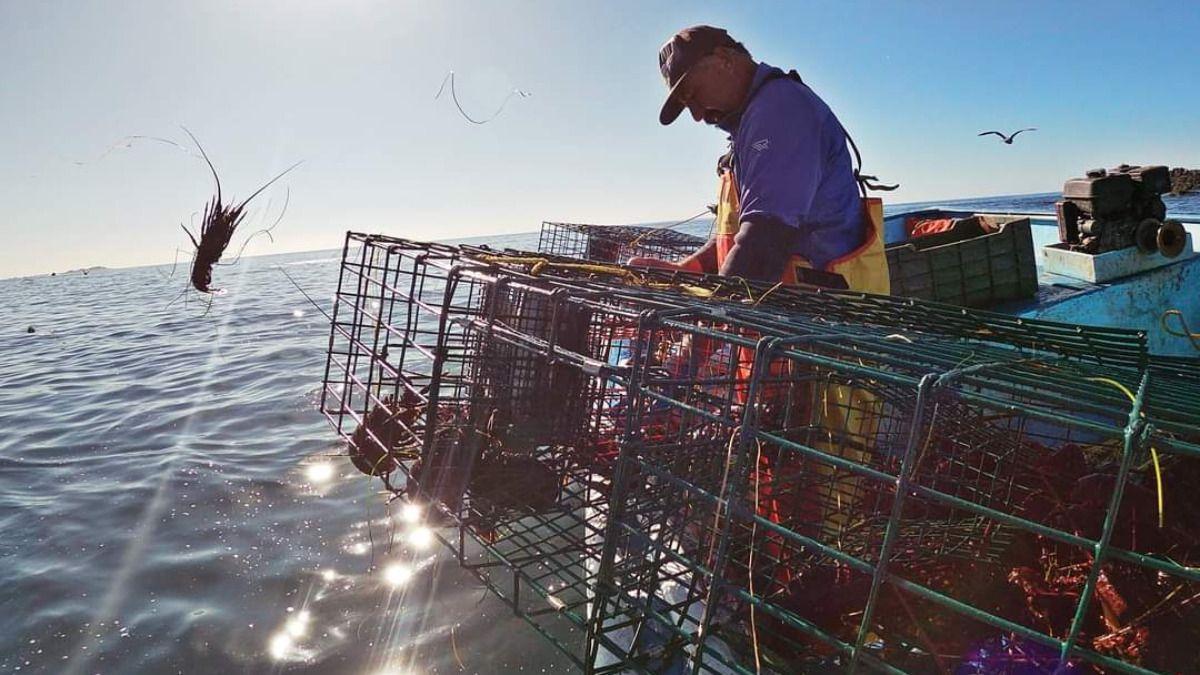Off the coast of Yucatan, lobster supports the economy of thousands of families. For a decade now, five fishing cooperatives in the east of the state agreed to close their season in January, a month earlier than established by federal authorities, to give the species a break and ensure a better catch the following year.
This 2025 will be no exception and in December, in the coming days, they will hold their meetings to define the date when they will stop fishing and will once again bet on the repopulation of the resource that supports their future.
“For years now, these five cooperatives have chosen to lose a month of immediate income to gain a future because we need to let the lobster rest, grow and reproduce without diving pressure,” said Rommel Alcocer Alcocer Díaz, a member of the Manuel Cepeda Peraza Cooperative.
The capture of lobster represents estimated revenues of between 200 and 300 million pesos each year for the entire state and is the third most important export fishery product in the country, according to data from the National Aquaculture and Fisheries Commission (Conapesca ).
 Fishing cooperatives note that they have good results in community decision-making. Source: Government of Mexico.
Fishing cooperatives note that they have good results in community decision-making. Source: Government of Mexico.
Currently, the cooperatives Pescadores Unidos de San Felipe, Legitimo de San Felipe, Rio Lagartos, Manuel Cepeda Peraza (Rio Lagartos) and the El Cuyo cooperative have a community agreement to extend the ban on lobster.
“Every season you have to hold a meeting, pass it on to the assemblies. In December and January, the meetings begin and each one casts a vote, if it is for or against the early closure,” explained Román Antonio Can, a member of the cooperative Pescadores Unidos de San Felipe and the Federation of the Fishing Industry of the Eastern Zone of Yucatán.
Although the early closure has been respected for more than a decade, every year it is discussed, debated and voted on again, as the fishermen agreed that this is not an imposition, but an agreement that is collectively renewed.
“It's not out of obligation. A consensus is reached, a vote is taken and the fisherman must always be well informed. Until now, we have had the season closed every February for many years,” Román added.
Caring for juvenile lobster
The main reason for bringing forward the closure is because in February the presence of juvenile lobster increases, even without a commercial size, since the minimum allowed is 13.5 centimeters in tail.
“This is what we try to take care of so that this juvenile lobster is already commercial in size starting in July of the same year,” Román explained.
Stopping diving just when more small specimens appear helps the population recover and reach the next cycle with better conditions.
The measure has been sustained even in difficult seasons, fishermen admit, because lobster is a commercially important species and when other fisheries are closed, catching lobster has historically been one of the economic supports of families.
 The fishermen will soon begin the meetings to resume the agreement. Source: Government of Mexico.
The fishermen will soon begin the meetings to resume the agreement. Source: Government of Mexico.
Community surveillance and agreements from the coast
Rommel Alcocer says that lobster fishing has been positive this year; so far in the season that began on July 1, they have caught 34,159 kilos, a figure similar to that of other groups.
“The truth is, thank God that went well for us. There has been octopus and a bit of lobster, but all things considered it's a good season for us,” he said.
Rommel links this good moment to the strengthening of community surveillance and the internal rules that have occurred between the ports of the eastern zone.
“We implemented the inspection and surveillance committee a long time ago. We go out to make sure that our products are not overexploited and we have internal fines for cooperative members. To this we attribute the fact that year after year there has been a little more fishing,” he said.
 In the eastern part of the state, lobster is a valued resource. Source: Government of Mexico.
In the eastern part of the state, lobster is a valued resource. Source: Government of Mexico.
The surveillance is organized jointly between San Felipe, Rio Lagartos, Las Coloradas and El Cuyo, with tours at different times of the year and coordination with authorities such as Conapesca and the Secretariat of the Navy so that they are the ones who make the seizures when poaching is detected.
Although the central fishery is lobster, the experience of these cooperatives also shows how community decisions complement official rules.
“We are not empowered to confiscate, so we notified Conapesca and the Navy. We give them fuel, we all go out and, if someone is found in flagrante delicto, they draw up the records and confiscate. It's the way we find to take care of what belongs to everyone,” Rommel explains.
*This article was written by Itzel Chan, who covers coastal communities thanks to the support of the Report for the World program.




Comentarios (0)